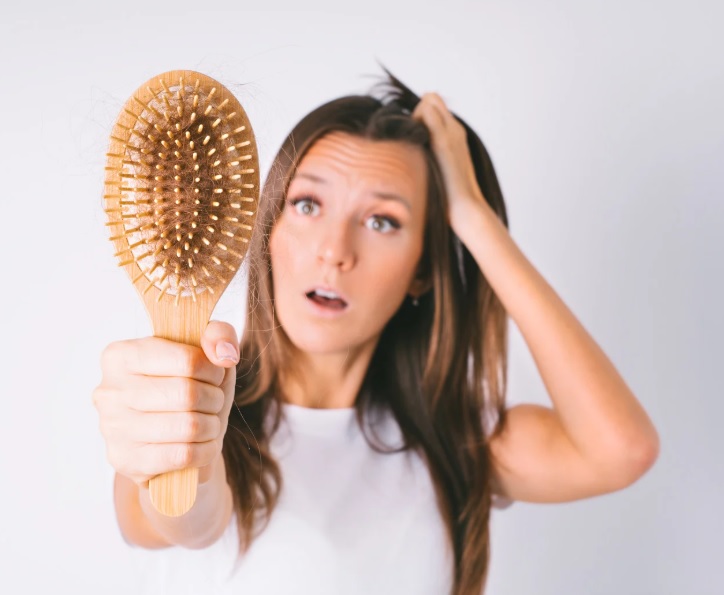
Breaking the Silence: Women and Hair Loss — What You Need to Know and What You Can Do
When we think about hair loss, our minds often go straight to men. Society has long accepted male pattern baldness as a normal part of aging. But for women? It’s still a quiet crisis. Silent. Stigmatized. Unspoken.
Yet the truth is that 40% of women experience visible hair thinning by the age of 40, and for many, it begins even earlier. From postpartum shedding and hormonal shifts to stress, genetics, and nutritional deficiencies, the causes are complex — but the impact is universal: emotional distress, a loss of confidence, and the feeling that no one else understands.
But you’re not alone — and more importantly, you’re not powerless.
The Hidden Struggle of Female Hair Loss
Unlike male baldness, which often starts at the crown or hairline, female hair loss tends to present as general thinning across the scalp. It’s subtle at first — more hair in the brush, a wider parting line, a ponytail that feels a little too thin. And then it builds.
Because society places such high value on a woman’s hair, many suffer in silence. They swap shampoos obsessively, try every home remedy under the sun, and Google in the dead of night, “Why am I losing my hair?”
Here’s the good news: we know more now than ever before, and treatments are evolving.
Understanding the Root Causes
Hair loss in women is often a perfect storm of contributing factors. Here are some of the most common:
- Hormonal fluctuations: Pregnancy, menopause, PCOS, or thyroid issues can disrupt the delicate hormonal balance that supports hair growth.
- Stress: Physical or emotional stress can push hair follicles into the “shedding” phase, causing significant loss weeks after a stressful event.
- Nutritional deficiencies: Iron, vitamin D, and biotin play critical roles in hair production. Even mild deficiencies can impact growth.
- Genetics: Female pattern hair loss (androgenic alopecia) is hereditary and can start as early as your 20s.
- Over-styling: Excessive heat, tight hairstyles, and chemical treatments can lead to traction alopecia and damage follicles over time.
The key to effective treatment? Targeting the issue at its root — literally and figuratively.
What You Can Do — Starting Now
The approach to hair restoration needs to be holistic. Quick fixes often disappoint because they don’t treat the cause — they just hide the symptoms. Here’s what works:
- Nourish from Within:
One of the most effective ways to support hair growth is by supplying your body with the nutrients it needs to produce strong, healthy strands. This is where targeted supplements can be a game-changer. HR23+ is one such supplement that has been gaining attention among women for all the right reasons. Unlike many “miracle pills,” HR23+ is formulated with a rich blend of biotin, saw palmetto, zinc, folic acid, horsetail extract, and marine collagen — all ingredients clinically linked to stronger, healthier hair. Women who’ve tried HR23+ report not just reduced shedding, but also noticeable regrowth and thicker texture within a few months of consistent use. - Gentle Hair Care:
Switch to sulfate-free, nourishing shampoos. Avoid excessive brushing when wet. Consider reducing the frequency of heat styling. Your scalp is skin — and it needs care. - Check Your Hormones:
If you suspect hormones may be to blame, consult your doctor. Simple blood tests can uncover imbalances that may be treated with medication or lifestyle adjustments. - Reduce Stress:
Easier said than done, but techniques like yoga, meditation, and even just getting more sleep can have a direct impact on your hair health over time. - Stay Consistent:
Whatever path you choose, commit to it for at least three months. Hair grows in cycles, and regrowth takes time.
Reclaiming Your Confidence
Hair loss doesn’t define you — but how you respond to it can. It’s not vain to care about your appearance. It’s human. And it’s okay to want to look in the mirror and see the vibrant, strong woman you know yourself to be.
There’s no one-size-fits-all solution to hair loss, but there is hope. By combining lifestyle changes with smart supplementation like HR23+, many women are not only stopping their hair loss — they’re turning it around.
So let’s break the silence. Let’s talk about it. And let’s start reclaiming control — one strand at a time.


Leave a Reply